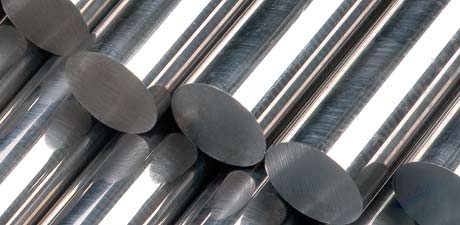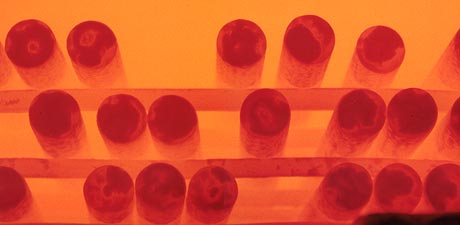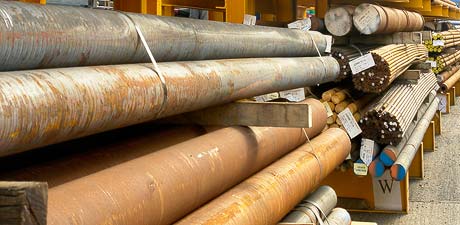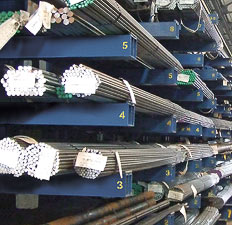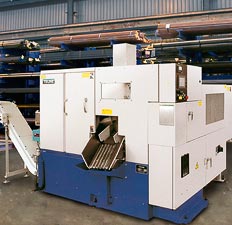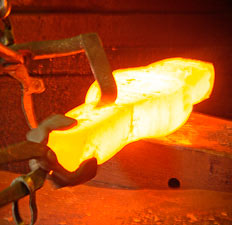Technical Data
Metallurgical Terms
Spiegeleisen.
(See Ferro Manganese).
Spoon Sample.
A sample of steel taken from the molten bath.
Stabilization.
(a) The retarding or prevention of a particular reaction by the addition of a stabilizer or negative catalyst.
(b) A heat treatment, to relieve internal stresses (see Stress Relieving).
(c) A treatment of magnetic material designed to increase the permanency of its magnetic properties or condition.
Stabilizers.
Elements added to austenitic stainless steels, of the type containing 15 to 20% chromium and 12 to 8% nickel, for the purpose of forming a stable carbide, thus preventing any tendency to intercrystalline corrosion or weld decay. The stabilizers in most common use are titanium and niobium. (The titanium should be added to the extent of 4 to 5 times, and niobium 8 to 10 times, the carbon content).
Stainless Steel (or Iron).
Steel containing between 10 and 35% chromium with or without the addition of nickel, manganese, silicon, copper, molybdenum, niobium or titanium. Stainless steel intended for cutlery contains about 0.30% carbon and 14% chromium, whilst in stainless irons the carbon content is less than about 0.10%.
Stamping.
(a) A stamping differs from a pressing in that it is made by the impact of a hammer on metal in dies either in the cold or hot state for drop stamping. (See Drop Forging).
(b) A process used to cut lines of letters, figures and decorations on smooth metal surfaces. The impact of a punch with comparatively sharp projecting outlines impresses the characters into the surface of the metal.
Steckel Mill.
A rolling mill, usually reversible, in which the rolls are not driven, the material being drawn through by powered reels. This permits greater reductions per pass and also allows the rolling of finer gauges than would otherwise be possible with the same roll diameter. The reels may be closed in furnaces to enable the metal to be rolled hot.
Strain Ageing.
The gradual changes in physical and mechanical properties, generally an increase in hardness, which takes place following cold deformation. At atmospheric temperatures the change is slow; it may be accelerated by heating to say 200°C.
Strain Hardening.
The loss of ductility and gain in hardness resulting from strain ageing.
Stress Corrosion.
The term implies a greater deterioration in mechanical properties of material through the simultaneous action of static stress and exposure to corrosion than could occur by the separate but additive action of those agencies. It is often accompanied by cracking.
Stress Number Curve.
(See S-N Curve).
Stress Relief Heat Treatment.
A process of reducing residual stress in metal by heating to a suitable temperature, e.g., 600° to 650°C and holding for a sufficient time for the internal stress to be released by creep. After soaking, the metal is allowed to cool sufficiently slowly to prevent the reintroduction of stress. This treatment may be applied to relieve stresses induced by casting, quenching, normalizing, machining, cold-working or welding.
Stress Relieving.
(See Stress Relief Heat Treatment).
Stress Strain Curve.
A graph in which stress (load divided by the original cross-sectional area of the test piece) is plotted against strain (the extension divided by the length over which it is measured).
Sub-Critical Annealing (Process Annealing).
Heating to, and holding at, some temperature below the transformation range. Subsequent cooling may be in air.
Sub-Zero Treatment.
Subjecting hardened steel to low-temperature treatment in order to complete the transformation of austenite to martensite. The treatment is best applied immediately after hardening, since tempering tends to stabilize the austenite making transformation more difficult. Cooling to -78°C by solid carbon dioxide is commonly used.


